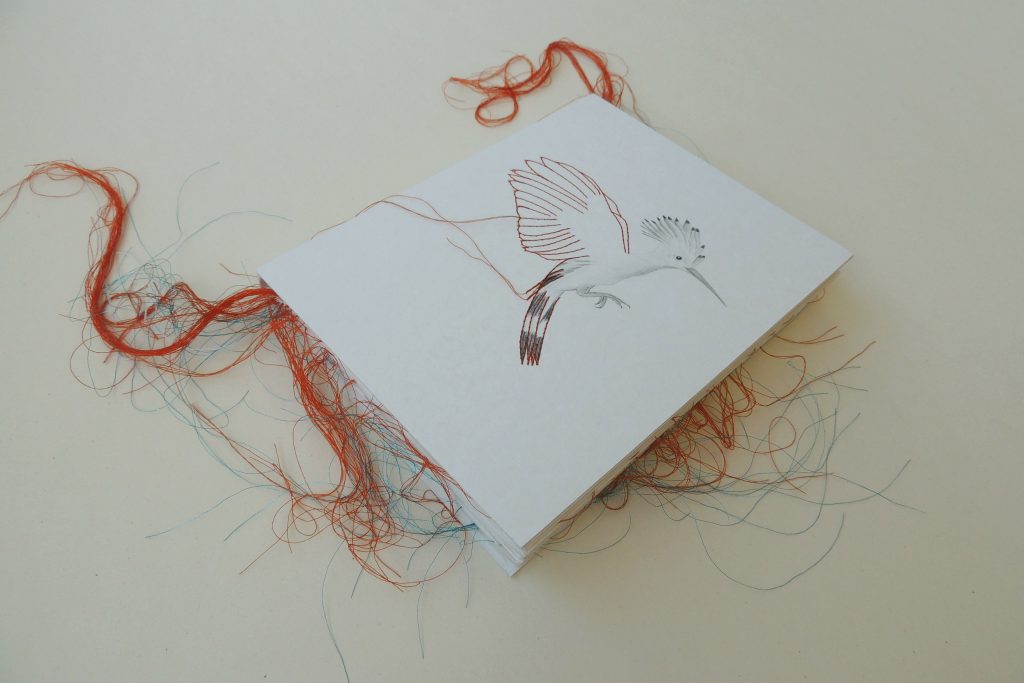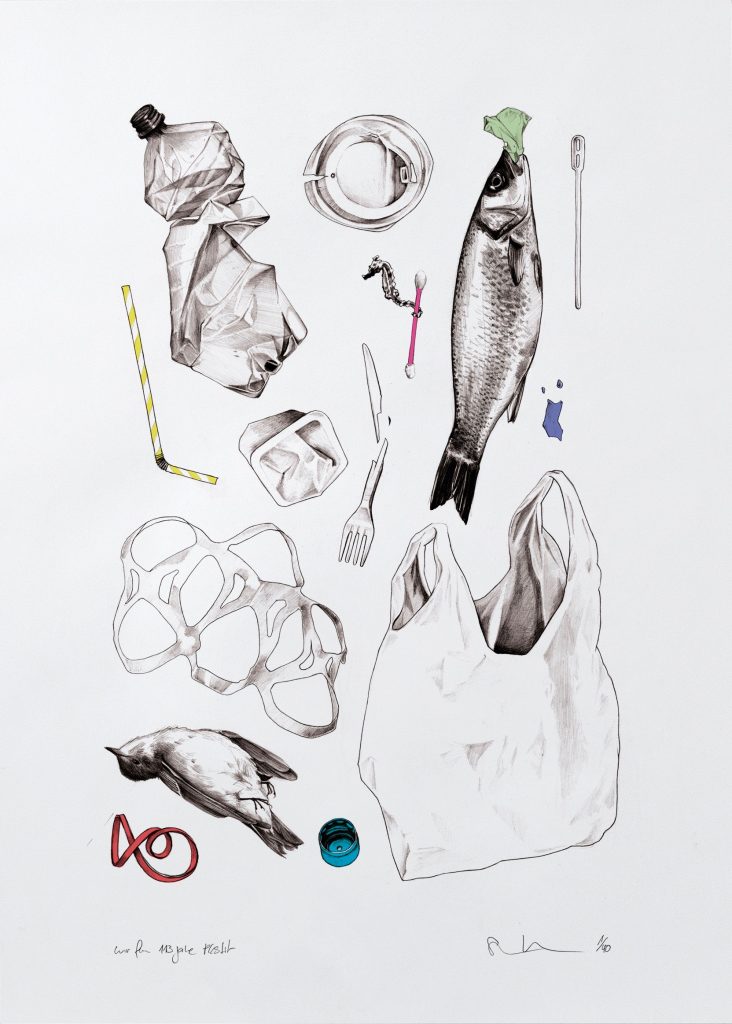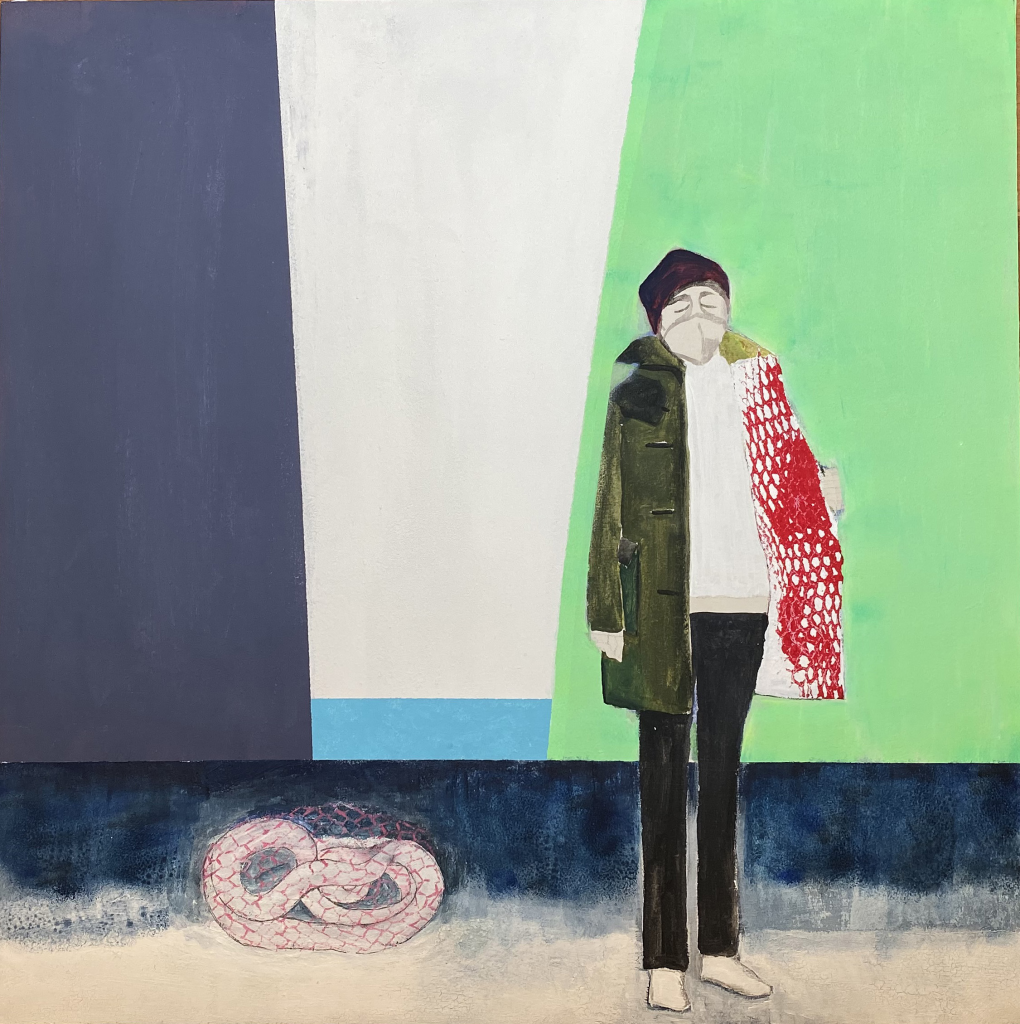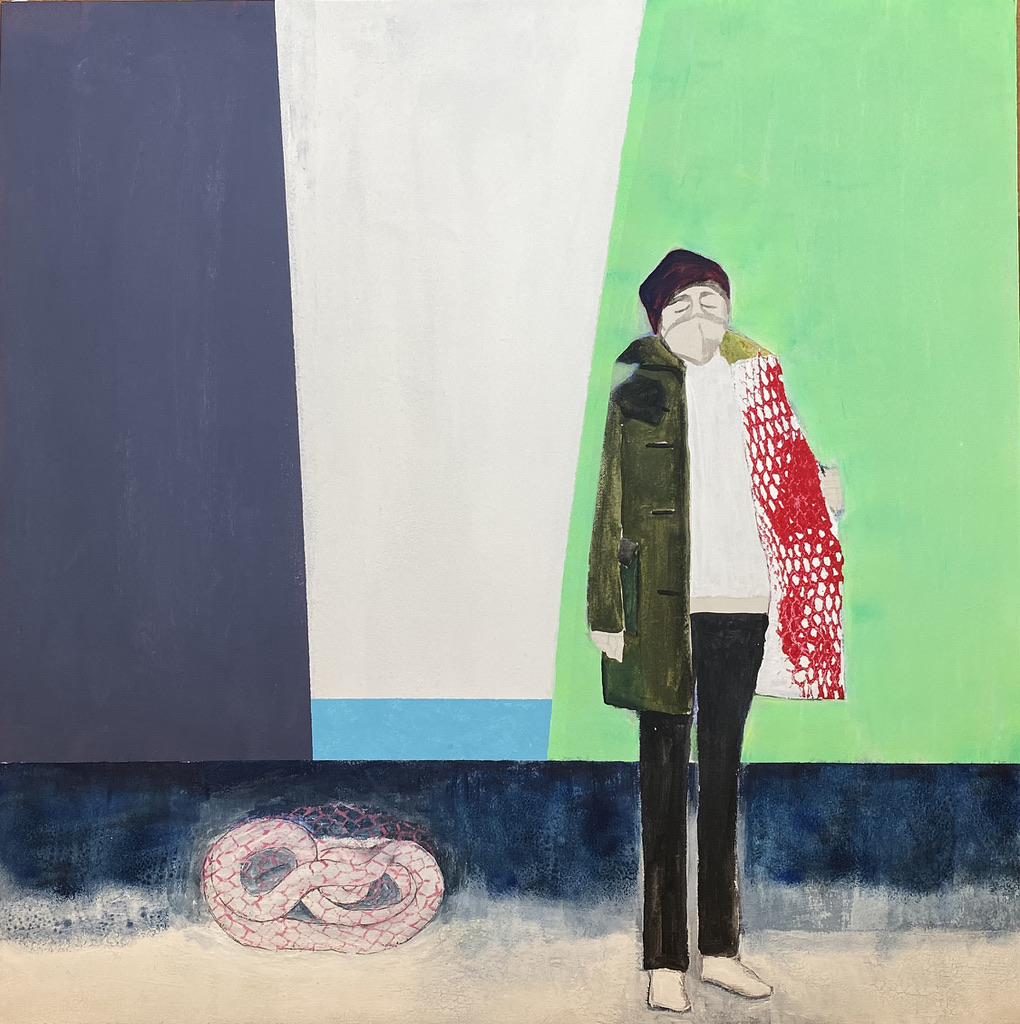Agnes C. Katschner THE SERPENT 2020
Works by Elisabeth Gschiel, Stefanie Hödlmoser, Agnes Katschner, Â
Renate Kordon. Curated by Irmi Horn.
Duration: May, 9th – June, 28th TRACES. New works will be added to the street gallery.
The focus of this exhibition is to follow traces of humanity back, as well as thinking ahead, projecting future traces. May it be historically profound moments or an individual balancing act between meaning and nonsense, between the imaginary, the real, the forgotten, the hidden, the tolerable or intense; if we do look, we are confronted with all of it. To assist us in dealing with and comprehending this, the artists take our hands and walk us through known and new worlds, which we can assembly in innovative ways.

Elisabeth Gschiel REDDISH MELODIES, 2019
Elisabeth Gschiel draws with her sewing machine on plastic wrapping materials and experimentally explores the the potential of her materials and tool. In a lecture on her work, the artist and architect will talk about objects, installations, and drawings that were created in that manner. Elisabeth Gschiel lives and works in Graz. In her work she researches themes between architecture, landscape, art and culture. The materials and techniques range from painting, to photography, design objects, sewn installations to architecture, from plastic, paper, to leather, as well as sewing accessories like needles and zippers, or vintage portrait photos from the flea market. Education: Ortweinschule Graz (Graphic Design focus), degree in Architecture at Technical University Graz. Residencies in ZĂĽrich 2005, Zagreb 2007 and Hamburg 2014. International Stipend of Styria in Guimaraes, Portugal, 2013. Part of Artists’ collective “Schaumbad – Freies Atelierhaus Gaaz”.

Stefanie Hödlmoser WIR FEIERN 113 JAHRE PLASIK, 2020
Stefanie Hödlmoser lives and works in Graz. She was born and raised in Upper Austria where she attended the Art high school in Linz. 2006-2010 she studies Industrial Design at FH Joanneum Graz, spending her apprenticeship in London with forpeople ltd. After being awarded a studio space in in the Artist house Rondo in Graz for the first time in 2009, she decides to stay in the city. She studies Art History for a year and works as a product designer at the BETA YOUNG CREATIVE lab, before becoming an independent designer in 2012. 2013/14 she again is housed at RONDO, where she turns to painting and design. Her work in her own design studio spans from product design, to graphics, illustration and art.

Agnes Katschner LE SERPENT, 2020
The Graz based artist Agnes Christine Katschner studied at the University of Applied Arts in Vienna in the master class Design theory, as well as Pedagogy, Philosophy and Psychology (1992-1999), 1997-1998 at the university Utrect (NL). 2000-2001 she finishes a postgraduate degree at the University Leeds (GB) with a MA in the Visual Arts. Since 2005 she teaches Art history and composition at Ortweinschule Graz.
Alfred Graf, born 1958 in Feldkrich, studied at the Academy of Fine Arts in Vienna. His main focus is visual research of sedimentary layers and stone formations of landscapes all over the world – in the region of his childhood Vorarlberg as well as in the US state Kentucky, the island Sylt or the Vesuv. The artist shows landscapes in their materiality and their inner structure and colour which give them character in abstract manners. During this process the works of Alfred Graf reveal both the essence of a region, as well as of the self. POSTPONED
Kurt Spitaler, born 1966 in Bruck/Mur, raised in Judenburg (Stmk) and GroĂźbuch (Ktn), studied Sociology (1991) and Sculpture at the Academy of Fine Arts in the Bruno Gironcoli class (1999). He lives in Vienna and works in Kottingbrunn (Upper Austria). Already during his studies Kurt Spitaler develops the characteristic technique of stitching and patching up. The principal of serial additions is essential in his art works which mostly rely on simple forms. The seam plays not only an aesthetic role here, it becomes elementary, functional, and meaningful, by connecting individual part of the everyday to a whole, new entity. POSTPONED

